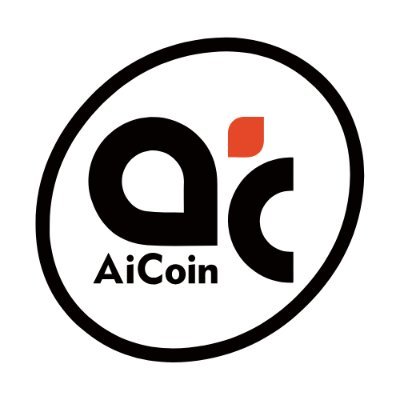Bitget:全球日交易量排名前 4!
BTC 市占率62.27%
BTC/USDT$82311.99 (-0.74%)恐懼與貪婪指數34(恐懼)
山寨季指數:0(比特幣季)
盤前交易幣種PAWS,WCT比特幣現貨 ETF 總淨流量:-$64.9M(1 天);-$169.2M(7 天)。Bitget 新用戶立享 6,200 USDT 歡迎禮包!立即領取
到 Bitget App 隨時隨地輕鬆交易!立即下載
Bitget:全球日交易量排名前 4!
BTC 市占率62.27%
BTC/USDT$82311.99 (-0.74%)恐懼與貪婪指數34(恐懼)
山寨季指數:0(比特幣季)
盤前交易幣種PAWS,WCT比特幣現貨 ETF 總淨流量:-$64.9M(1 天);-$169.2M(7 天)。Bitget 新用戶立享 6,200 USDT 歡迎禮包!立即領取
到 Bitget App 隨時隨地輕鬆交易!立即下載
Bitget:全球日交易量排名前 4!
BTC 市占率62.27%
BTC/USDT$82311.99 (-0.74%)恐懼與貪婪指數34(恐懼)
山寨季指數:0(比特幣季)
盤前交易幣種PAWS,WCT比特幣現貨 ETF 總淨流量:-$64.9M(1 天);-$169.2M(7 天)。Bitget 新用戶立享 6,200 USDT 歡迎禮包!立即領取
到 Bitget App 隨時隨地輕鬆交易!立即下載


Storm Warfare 價格JAN
上架
報價幣種:
TWD
NT$0.08686-3.62%1D
價格走勢圖
TradingView
最近更新時間 2025-04-06 14:02:21(UTC+0)
市值:--
完全稀釋市值:--
24 小時交易額:NT$1,177,234.51
24 小時交易額/市值:0.00%
24 小時最高價:NT$0.09171
24 小時最低價:NT$0.08679
歷史最高價:NT$10.04
歷史最低價:NT$0.08679
流通量:-- JAN
總發行量:
1,000,000,000JAN
流通率:0.00%
最大發行量:
1,000,000,000JAN
以 BTC 計價:0.{7}3182 BTC
以 ETH 計價:0.{5}1497 ETH
以 BTC 市值計價:
--
以 ETH 市值計價:
--
合約:
0x5a92...8e416Dd(Ethereum)
更多
您今天對 Storm Warfare 感覺如何?
注意:此資訊僅供參考。
Storm Warfare 今日價格
Storm Warfare 的即時價格是今天每 (JAN / TWD) NT$0.08686,目前市值為 NT$0.00 TWD。24 小時交易量為 NT$1.18M TWD。JAN 至 TWD 的價格為即時更新。Storm Warfare 在過去 24 小時內的變化為 -3.62%。其流通供應量為 0 。
JAN 的最高價格是多少?
JAN 的歷史最高價(ATH)為 NT$10.04,於 2024-02-05 錄得。
JAN 的最低價格是多少?
JAN 的歷史最低價(ATL)為 NT$0.08679,於 2025-04-06 錄得。
Storm Warfare 價格預測
JAN 在 2026 的價格是多少?
根據 JAN 的歷史價格表現預測模型,預計 JAN 的價格將在 2026 達到 NT$0.09607。
JAN 在 2031 的價格是多少?
2031,JAN 的價格預計將上漲 +8.00%。 到 2031 底,預計 JAN 的價格將達到 NT$0.1576,累計投資報酬率為 +72.12%。
Storm Warfare 價格歷史(TWD)
過去一年,Storm Warfare 價格上漲了 -93.11%。在此期間,JAN 兌 TWD 的最高價格為 NT$1.4,JAN 兌 TWD 的最低價格為 NT$0.08679。
時間漲跌幅(%) 最低價
最低價 最高價
最高價 
 最低價
最低價 最高價
最高價 
24h-3.62%NT$0.08679NT$0.09171
7d-7.79%NT$0.08679NT$0.09603
30d-18.40%NT$0.08679NT$0.1135
90d-32.16%NT$0.08679NT$0.1344
1y-93.11%NT$0.08679NT$1.4
全部時間-90.50%NT$0.08679(2025-04-06, 今天 )NT$10.04(2024-02-05, 1 年前 )
Storm Warfare 市場資訊
Storm Warfare 持幣分布集中度
巨鯨
投資者
散戶
Storm Warfare 地址持有時長分布
長期持幣者
游資
交易者
coinInfo.name(12)即時價格表

Storm Warfare 評級
社群的平均評分
4.6
此內容僅供參考。
JAN 兌換當地法幣匯率表
1 JAN 兌換 MXN$0.051 JAN 兌換 GTQQ0.021 JAN 兌換 CLP$2.521 JAN 兌換 HNLL0.071 JAN 兌換 UGXSh9.631 JAN 兌換 ZARR0.051 JAN 兌換 TNDد.ت0.011 JAN 兌換 IQDع.د3.431 JAN 兌換 TWDNT$0.091 JAN 兌換 RSDдин.0.281 JAN 兌換 DOP$0.161 JAN 兌換 MYRRM0.011 JAN 兌換 GEL₾0.011 JAN 兌換 UYU$0.111 JAN 兌換 MADد.م.0.021 JAN 兌換 OMRر.ع.01 JAN 兌換 AZN₼01 JAN 兌換 KESSh0.341 JAN 兌換 SEKkr0.031 JAN 兌換 UAH₴0.11
- 1
- 2
- 3
- 4
- 5
最近更新時間 2025-04-06 14:02:21(UTC+0)
如何購買 Storm Warfare(JAN)

建立您的免費 Bitget 帳戶
使用您的電子郵件地址/手機號碼在 Bitget 註冊,並建立強大的密碼以確保您的帳戶安全

認證您的帳戶
輸入您的個人資訊並上傳有效的身份照片進行身份認證

將 Storm Warfare 兌換為 JAN
我們將為您示範使用多種支付方式在 Bitget 上購買 Storm Warfare
交易 JAN 永續合約
在 Bitget 上註冊並購買 USDT 或 JAN 後,您可以開始交易衍生品,包括 JAN 合約和槓桿交易,增加收益。
JAN 的目前價格為 NT$0.08686,24 小時價格變化為 -3.62%。交易者可透過做多或做空 JAN 合約獲利。
購買其他幣種
用戶還在查詢 Storm Warfare 的價格。
Storm Warfare 的目前價格是多少?
Storm Warfare 的即時價格為 NT$0.09(JAN/TWD),目前市值為 NT$0 TWD。由於加密貨幣市場全天候不間斷交易,Storm Warfare 的價格經常波動。您可以在 Bitget 上查看 Storm Warfare 的市場價格及其歷史數據。
Storm Warfare 的 24 小時交易量是多少?
在最近 24 小時內,Storm Warfare 的交易量為 NT$1.18M。
Storm Warfare 的歷史最高價是多少?
Storm Warfare 的歷史最高價是 NT$10.04。這個歷史最高價是 Storm Warfare 自推出以來的最高價。
我可以在 Bitget 上購買 Storm Warfare 嗎?
可以,Storm Warfare 目前在 Bitget 的中心化交易平台上可用。如需更詳細的說明,請查看我們很有幫助的 如何購買 指南。
我可以透過投資 Storm Warfare 獲得穩定的收入嗎?
當然,Bitget 推出了一個 策略交易平台,其提供智能交易策略,可以自動執行您的交易,幫您賺取收益。
我在哪裡能以最低的費用購買 Storm Warfare?
Bitget提供行業領先的交易費用和市場深度,以確保交易者能够從投資中獲利。 您可通過 Bitget 交易所交易。
您可以在哪裡購買 Storm Warfare(JAN)?
影片部分 - 快速認證、快速交易

如何在 Bitget 完成身分認證以防範詐騙
1. 登入您的 Bitget 帳戶。
2. 如果您是 Bitget 的新用戶,請觀看我們的教學,以了解如何建立帳戶。
3. 將滑鼠移到您的個人頭像上,點擊「未認證」,然後點擊「認證」。
4. 選擇您簽發的國家或地區和證件類型,然後根據指示進行操作。
5. 根據您的偏好,選擇「手機認證」或「電腦認證」。
6. 填寫您的詳細資訊,提交身分證影本,並拍攝一張自拍照。
7. 提交申請後,身分認證就完成了!
加密貨幣投資(包括透過 Bitget 線上購買 Storm Warfare)具有市場風險。Bitget 為您提供購買 Storm Warfare 的簡便方式,並且盡最大努力讓用戶充分了解我們在交易所提供的每種加密貨幣。但是,我們不對您購買 Storm Warfare 可能產生的結果負責。此頁面和其包含的任何資訊均不代表對任何特定加密貨幣的背書認可,任何價格數據均採集自公開互聯網,不被視為來自Bitget的買賣要約。
Bitget 觀點

Aicoin-EN-Bitcoincom
22小時前
Pectra Upgrade Offers Hope Amid Ethereum’s 2025 Struggles, Expert Says
Ethereum’s ( ETH) performance since the start of 2025 has been lackluster compared to bitcoin ( BTC) and the broader cryptocurrency market. After beginning the year trading above $3,300, ETH declined, reaching a low of $1,805.40 as of April 4, 2025. In contrast, bitcoin ( BTC), which rallied from under $69,000 on Nov. 5, 2024, to peak at just over $109,000 on Jan. 20, 2025, was down by approximately 10%, compared to ETH’s 45%.
This divergence in performance has led to frustration among ETH holders and fans, who expected the cryptocurrency to outshine or at least match BTC’s growth. However, some experts remain bullish on ETH’s long-term prospects. They predict ETH potentially reaching $5,000 by the end of 2025, and some even see it surpassing $10,000 in the near future.
The experts point to ongoing ecosystem upgrades, including the upcoming Pectra upgrade, as factors likely to kickstart a rebound that could see ETH eventually matching BTC’s strong performance. Still, some ETH holders and supporters continue to vent about the ETH price decline, which they attribute to both a lack of progress and the Ethereum team’s perceived failure to stem the regression. However, Ethereum proponents push back against this narrative, arguing that it ignores the real work being done to improve the protocol.
Alex Loktev, CRO at P2P.org, acknowledges the frustration surrounding ethereum’s recent price performance, but attributes it to the network’s focus on foundational development rather than hype-driven narratives. He argues that Ethereum’s shift to Proof-of-Stake (PoS), the implementation of EIP-1559, and the build-out of its Layer-2 ecosystem, while not immediately impacting price, are crucial for long-term stability and scalability.
Loktev notes that other crypto or related assets such as bitcoin exchange-traded funds (ETF), artificial intelligence (AI) tokens, and memecoins have captured market attention. This has left Ethereum to work on its infrastructure. However, he remains cautiously optimistic for 2025, anticipating positive impacts from the Pectra upgrade, potential ETH ETFs with staking, and a maturing Layer-2 ecosystem. He believes ETH could surpass previous highs with favorable market conditions.
With respect to the Pectra upgrade, Loktev said this change promises to reshape the landscape of staking and potentially inject renewed vigor into the Ethereum ecosystem. In fact, Loktev sees the Pectra upgrade as a crucial step in strengthening Ethereum’s economic foundation. The upgrade, he argues, makes staking significantly safer.
“Look at the numbers – slashing penalties dropping by up to 128x makes staking dramatically safer. For institutional money that’s been sitting on the sidelines, worried about tail risk, this removes a major barrier. Combined with auto-compounding, we’ve got a seriously improved staking proposition,” Loktev stated.
Furthermore, the Pectra upgrade, slated for April 30, is said to introduce auto-compounding, enhancing the overall staking proposition. Loktev anticipates the staking ratio, currently around 31%, to climb towards 40-45% within the next year or two from the upgrade. Although the upgrade alone may not immediately “pump” ETH’s price, Loktev believes it will strengthen Ethereum’s economic fundamentals by locking up more supply and creating increased yield opportunities within the decentralized finance (DeFi) sector.
By addressing concerns surrounding staking risks and enhancing yield opportunities, the upgrade could pave the way for increased institutional adoption and a more robust Ethereum ecosystem.
Meanwhile, Loktev claims the upgrade, which increases validators with Maximum Effective Balances (MEB) from 32 to up to 2048 ETH, is poised to bring significant operational efficiencies and risk reductions to the network. While some might question the impact on decentralization, Loktev argues that this move addresses crucial practicalities for validator operators.
He highlights the operational burden of running numerous smaller validators. He said: “Running 64 validators instead of one means 64 times the infrastructure complexity, 64 times the monitoring overhead, and 64 times the potential points of failure.”
Beyond operational benefits, Loktev points to the significant advantages for everyday stakers. The introduction of auto-compounding allows consensus layer rewards, which constitute about 75% of total staking returns, to automatically grow validator balances, effectively providing compound interest without manual intervention.
Furthermore, Pectra upgrade dramatically improves the risk profile for validators. Loktev notes that under the current system, a “simple technical hiccup” can result in a 3.28% loss of stake. Post-Pectra, this risk is reduced to a mere 0.19%, representing a 17x reduction in risk exposure.
Looking ahead to 2030, Loktev predicts significant potential for Ethereum, provided the network successfully executes its roadmap and PoS remains effective. He emphasizes that Ethereum’s growing role as essential infrastructure for the digital economy is the key trend to watch, rather than short-term price fluctuations. Loktev concludes that Ethereum’s future success hinges on its ability to scale through Layer-2 solutions and maintain its position as a leading platform for decentralized applications.
免责声明:本文章仅代表作者个人观点,不代表本平台的立场和观点。本文章仅供信息分享,不构成对任何人的任何投资建议。用户与作者之间的任何争议,与本平台无关。如网页中刊载的文章或图片涉及侵权,请提供相关的权利证明和身份证明发送邮件到support@aicoin.com,本平台相关工作人员将会进行核查。
BTC-1.48%
ETH-3.23%

Cryptonews Official
1天前
North Korea’s latest crypto hack reveals Web3’s security weakness: pro
Oak Security’s Jan Philipp Fritsche says Web3 needs to stop ignoring basic OPSEC hygiene, especially as state-sponsored threats rise.
As North Korea’s “ClickFake” campaign draws renewed attention to cyberattacks on crypto firms, security experts say Web3’s biggest vulnerability isn’t smart contracts — it’s people.
Jan Philipp Fritsche, Managing Director at Oak Security, argued in a note to crypto.news that most blockchain projects lack even the most basic operational security standards .
Fritsche, a former European Central Bank analyst who now advises and audits protocols says the real risk lies in how teams manage devices, permissions, and production access.
“The ClickFake campaign shows just how easily teams can be compromised,” Fritsche said in a note. “Web3 projects have to assume that most of your employees are exposed to cyber threats outside their work environment.”
For background, North Korea’s Lazarus Group is using a cyber campaign called “ClickFake Interview” targeting cryptocurrency professionals. The group posed as recruiters on LinkedIn and X, luring victims into fake interviews to distribute malware.
The malware, named “ClickFix,” gave attackers remote access to steal sensitive data like crypto wallet credentials. Researchers said Lazarus used realistic documents and full interview conversations to enhance credibility.
Most DAOs and early-stage teams still rely on personal devices — often used for both development and Discord chatting — which leaves them exposed to nation-state level attackers. Unlike traditional enterprises, many DAOs have no way to enforce security standards.
“There’s no way to enforce security hygiene,” Fritsche said. “Too many teams, especially smaller ones, ignore this and hope for the best.”
Fritsche says even the assumption that a device is clean may be flawed. For high-value projects, that means developers should never have the ability to push changes to production unilaterally.
“Company-issued devices with limited privileges are a good start,” Fritsche said. “But you also need fail-safes—no single user should have that kind of control.”
The lesson from traditional finance? Every risk is assumed to be real until proven otherwise.
“In TradFi, you need a keycard just to check your inbox,” Fritsche said. “That standard exists for a reason. Web3 needs to catch up.”
UP-4.61%
PEOPLE-9.54%

Cryptonews Official
2天前
Hyperliquid’s JELLY exploit could happen to other DeFi protocols, expert warns
An expert from Oak Security has explained what went wrong with the JELLY token exploit, which cost the Hyperliquid exchange $10.63 million.
Reactions are still mounting from an exploit that cost Hyperliquid (HYPE) exchange’s users $10.63 million in losses. The reactions seem to have one thing in common, which is calling out Hyperliquid for its practices.
Dr. Jan Philipp Fritsche, managing director at Oak Security, shared his analysis with crypto.news. According to Fritsche, the exploit wasn’t caused by a bug, but rather was a predictable failure, one that could pose a risk to other DeFi protocols as well.
The JELLY exploit appears to be the result of a coordinated market manipulation by several users. Specifically, one trader opened a $5 million short position on JELLY, only to remove their margin. Hyperliquid was left holding the position, after which other traders coordinated a short squeeze.
“The attacker opened massive opposing positions in JELLY, knowing that one side would collapse and the other would cash out. Because payouts weren’t capped and risk wasn’t isolated, the protocol ate the loss—and the attacker walked away with millions,“ Dr. Jan Philipp Fritsche, Oak Security
Fritsche described the exploit as a “textbook example of unpriced vega risk”, a concept from traditional finance that refers to the implied volatility of an asset. He emphasized that many DeFi protocols still fail to account for this crucial risk metric.
This isn’t the first time industry figures have criticized Hyperliquid over the Jelly incident. Following the exploit, Bitget CEO Gracy Chen called the exchange’s practices “immature, unethical, and unprofessional,” warning that it could become FTX 2.0 .
Although Hyperliquid has pledged to compensate users affected by the exploit, the damage to its reputation may already be done. More importantly, the exploit has drawn attention to broader vulnerabilities in the decentralized finance sector.
In 2024, DeFi exploits cost users $308.7 million in losses. That was more than rug pulls, which accounted for $192.9 million . Just days after the Jelly exploit, a DeFi protocol SIR.trading fell victim to another exploit, losing all of its total value locked of $355,000 .
HYPE-7.80%
S-6.24%

fokus
2天前
value low holding for now at least, if equities can't break us down today what can?
i mean realistically there is very little chance ES breaches much lower than 5k (no jinx ples)
it seems to me that the relationship between stocks and crypto is sort of inverse dec/jan, where
ME-5.05%

Aicoin-EN-Bitcoincom
4天前
Experts: Gold’s Rise Doesn’t Undermine Bitcoin’s Digital Gold Status
On the eve of what U.S. President Donald Trump has called “liberation day,” the price of gold reached a new milestone of $3,117 per ounce. This came just days after the precious metal surpassed the $3,100 mark, fueling optimism among gold proponents.
Gold’s attractiveness amid trade war fears, which have weighed on traditional assets and even bitcoin ( BTC), has prompted Goldman Sachs to revise its year-end price prediction upward. As reported by Reuters, the investment bank raised its forecast range to $3,250-$3,520 from $3,100-$3,300.
Goldman Sachs attributes the change to aggressive gold purchases by Asian central banks, a trend it expects to continue for the next three to six years. It also cites stronger-than-expected gold exchange-traded fund (ETF) inflows as another reason for the upward revision.
The apparent change in investors’ stance on gold contrasts with their perception of BTC, particularly after Trump’s inauguration on Jan. 20. While gold’s latest milestone brings its year-to-date gain to 22%, BTC’s slide from its Trump inauguration day peak of nearly $109,000 to just under $83,000 on March 31 means it ended the first quarter of 2025 approximately 23% in the red.
This Q1 performance by digital assets, seen by some as a safe-haven asset, has emboldened critics who reject the notion that BTC is digital gold. The fact that BTC has seemingly wavered each time Trump has threatened or imposed tariffs on the U.S.’s main trade partners lends credence to their argument.
However, despite this seeming correlation with traditional assets, bitcoin proponents insist the crypto asset’s first-quarter performance does not undermine its digital gold status. This sentiment is shared by experts interviewed by Bitcoin.com News, including Rena Shah, COO of Trust Machines.
According to Shah, while gold might have retained its safe-haven status, Bitcoin is the “only asset you’ll never sell.” The COO also pointed to how BTC continues to outperform other assets since the launch of bitcoin ETFs.
“Bitcoin is punching above its weight, as a younger asset class compared to legacy ETFs, like gold. Whether you hold bitcoin as a hedge against market uncertainty or are waiting for the right reentry point, Bitcoin is evolving to offer so much more than gold can,” Shah said.
Ben Caselin, CMO at African cryptocurrency exchange VALR, said the prospect of countries and central banks adding BTC to their treasuries signals the start of a country-level game theory. Caselin also cites countries stocking up on gold as indicating better times ahead for BTC.
“We cannot rule out that these movements are due to game theory around Bitcoin, with the rally in gold acting as a precursor for an explosion in bitcoin acquisition,” Caselin said.
Mithil Thakore, CEO of Velar, told Bitcoin.com News that he disagrees with the notion that Bitcoin has lost its digital gold status. Instead, he argued that BTC has become “more important than ever, both in terms of perception and practical adoption.” To support this viewpoint, Thakore pointed to the adoption of BTC by institutions and its proven staying power. Regarding what the rising interest in gold means for BTC, the Velar CEO said:
“Renewed interest in gold actually supports Bitcoin’s value proposition. Both assets are responding to macroeconomic instability, inflation concerns, and growing distrust in fiat systems.”
Luke Xie, co-founder and CEO of Satlayer, suggested that gold’s rally could be temporary, fueled by “short-term safe-haven inflows amid global uncertainty.” This contrasts with BTC, whose value proposition is “anchored in its finite supply, decentralized network, and ever-growing adoption.”
Xie also highlighted how bitcoin’s gold status is boosted by technological advancements, something that cannot be said of gold.
“In essence, rather than losing its ‘digital gold’ status, Bitcoin is evolving—bolstered by technological advancements and strategic initiatives like BTCfi—that underscore its complementary and superior role in modern portfolio construction,” the Satlayer CEO said.
免责声明:本文章仅代表作者个人观点,不代表本平台的立场和观点。本文章仅供信息分享,不构成对任何人的任何投资建议。用户与作者之间的任何争议,与本平台无关。如网页中刊载的文章或图片涉及侵权,请提供相关的权利证明和身份证明发送邮件到support@aicoin.com,本平台相关工作人员将会进行核查。
BTC-1.48%
UP-4.61%
相關資產
最近新增
最近新增的加密貨幣
相近市值
在所有 Bitget 資產中,這8種資產的市值最接近 Storm Warfare。



































